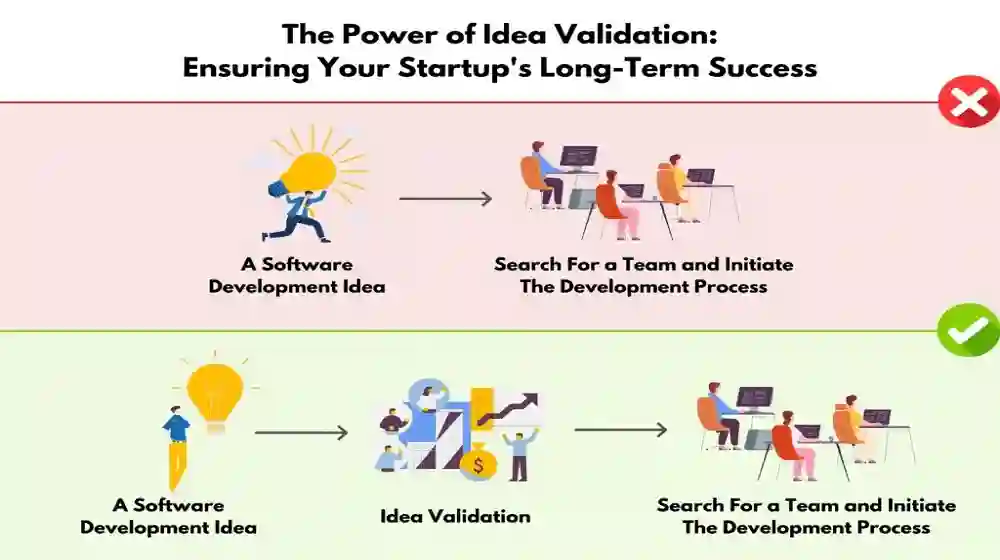
How to Validate Your Business Idea Before Investing Money
Starting a business is exciting. It’s also terrifying. You’ve got this idea—brilliant, world-changing, maybe even the next unicorn. But before you sink your savings into a dream that might turn into a nightmare, let’s talk about how to make sure your business idea actually has legs.
Why Business Idea Validation Matters
Picture this: You spend months (or years) building a product, setting up a website, printing business cards—only to hear crickets when you launch. Painful, right? Validating your business idea first saves you from that heartbreak. It helps you:
- Find real customers who actually want what you’re selling
- Avoid flushing money down the drain
- Figure out if your pricing makes sense
- Sleep better at night knowing you’re not making a huge mistake
Step 1: Market Research (a.k.a. The “Is This Even a Good Idea?” Test)
Who Are Your People?
Your customers are out there—you just have to find them. Imagine describing your ideal customer to a friend: “She’s 32, loves oat milk lattes, runs marathons, and spends too much money on skincare.” Be that specific. Then, go find those people. Use:
- Facebook groups
- Reddit threads
- Instagram comments
- Your nosy aunt who knows everyone
Ask them: “Would you buy this?” If they hesitate, ask why. If they say yes, ask how much they’d pay. If they ghost you, well, that’s a sign too.
Stalking—But Make It Business
Who’s already doing something similar? How are they pricing it? What are customers complaining about? (Amazon reviews and Trustpilot are gold mines for this.) If you spot a gap—boom, there’s your opportunity.
Step 2: Build a Bare-Bones Version (MVP: Minimum Viable Panic)
Don’t build the whole thing yet. Make a scrappy version—something that lets people test the core concept. Examples:
- Selling a new kind of granola? Hand-make 20 bags and sell them at a farmers’ market.
- Launching an app? Create a clickable prototype before spending $50K on development.
- Opening a coffee shop? Pop up at a local event first and see if people show up.
People don’t just say they’d buy something—they actually put money down. That’s the real test.
Step 3: Ask for Money Before You Have a Product (Yes, Really)
Pre-sales are the ultimate gut check. If strangers will pay for your thing before it even exists, you’re onto something. Ways to do this:
- Crowdfunding (Kickstarter, Indiegogo)
- Pre-orders on your website
- A waitlist with deposits
If no one bites? Either tweak your offer or rethink the whole thing.
Step 4: The Feedback Loop (a.k.a. “Tell Me Why This Sucks”)
Once your test run is live, gather feedback like your life depends on it (because your business does). Ask early users:
- What’s annoying about this?
- Would you recommend it to a friend? Why or why not?
- If I took this away tomorrow, would you care?
If they don’t care? Time to pivot. If they start throwing money at you? You’re onto something.
Step 5: Can You Actually Make Money? (Crunching the Numbers)
Passion won’t pay the bills, so let’s get real. Run the numbers:
- How much does it cost to make/sell your product?
- How much can you charge before people think you’re crazy?
- How many customers do you need to break even?
Quick check: If you need 100,000 customers to make a profit, but you only have 3 people interested (one of whom is your mom), you may need a different strategy.
Step 6: Throw Some Marketing at It
Before launching big, test small:
- Run $50 in Facebook or Google ads and see if anyone clicks
- Post on TikTok and gauge reactions
- Partner with a micro-influencer to test the waters
No engagement? Adjust your messaging or rethink your audience. Fast forward six months, and you’ll thank yourself for doing this early.
Step 7: Find a Business Yoda
No, not the green Jedi. A mentor. Someone who’s been through this before. Join business communities, hit up networking events, or just slide into someone’s LinkedIn DMs with a well-crafted message (no, “Hey” doesn’t count). Their advice could save you from making rookie mistakes.
Step 8: The Pilot Run (Like a Dress Rehearsal for Your Business)
Test a small version of your business before going all in. Example:
- Thinking of opening a bakery? Sell your pastries at a local event first.
- Starting a coaching service? Offer free sessions in exchange for testimonials.
- Developing a subscription box? Send test boxes to a small group and gauge reactions.
If it works, scale up. If it flops, adjust before it’s too late.
Step 9: The Boring But Necessary Stuff (Legal & Compliance)
I know, I know. Paperwork is dull. But you need to:
- Register your business (before someone else takes your genius name)
- Get the right licenses and permits
- Check tax requirements (or, better yet, get an accountant to do it)
- Protect your intellectual property (because yes, people will steal your ideas)
Step 10: Lock In Your Game Plan
By now, you’ve tested, tweaked, and survived multiple existential crises. It’s time to pull it all together in a business plan. Include:
- Who your customers are
- How you’ll market to them
- What it’ll cost to run the business
- How much money you realistically expect to make
This document isn’t just for investors—it’s your roadmap when things get messy. (And they will.)
So, What’s Next?
If you’ve validated your business idea, go for it. If you hit major red flags? Consider tweaking the idea or trying something else. Either way, you’ve saved yourself months (or years) of frustration and financial regret.
Now go build something awesome—and remember, even the best businesses started as half-baked ideas written on a napkin somewhere.